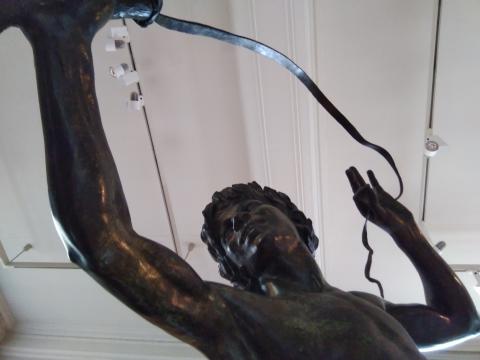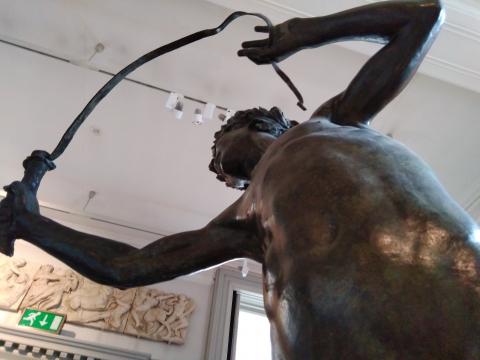Lupercalia

Conrad Dressler (1856-1940) studied under the French sculptor Edouard Lanteri; his work mirrors the contemporary fashion for sculptural realism. This 1907 bronze (Lupercalia) shows a nude male laughing as he brandishes a whip. The Lupercalia was a pagan Roman festival upon which our St Valentine’s day was modelled. It was an attempt by the Roman Church to sanctity some of the popular pagan rites by renaming them. Whips were made of goats’ hide that had been sacrificed to the god Pan. Young men would then roam the streets lashing passers-by, with the intention of procuring fertility in their victims. Childless women might position themselves on thoroughfares that night so as to receive one of the helpful weals.

A more helpful picture of love and fruitfulness is to be found in 2 John, upon which I preached last night. The Elder addresses himself to
...the elect lady and her children, whom I love in truth, and not only I, but also all those who have known the truth, because of the truth which abides in us and will be with us forever,
all the while extolling the virtues of love tempered by truth:
And now I plead with you, lady, not as though I wrote a new commandment to you, but that which we have had from the beginning: that we love one another. This is love, that we walk according to His commandments. This is the commandment, that as you have heard from the beginning, you should walk in it.
Whatever your plans for tonight's modern Lupercalia (if any), pray your love for Christ grows stronger, and that the churches of our nation will continue in obedience to Him, which is the true hallmark of Christian love. Furthermore, it is sometimes by the stripes of affliction that we learn to love Him more and bear more fruit thereby.
- Log in to post comments


 Sunday Worship 10.45am & 6.00pm
Sunday Worship 10.45am & 6.00pm